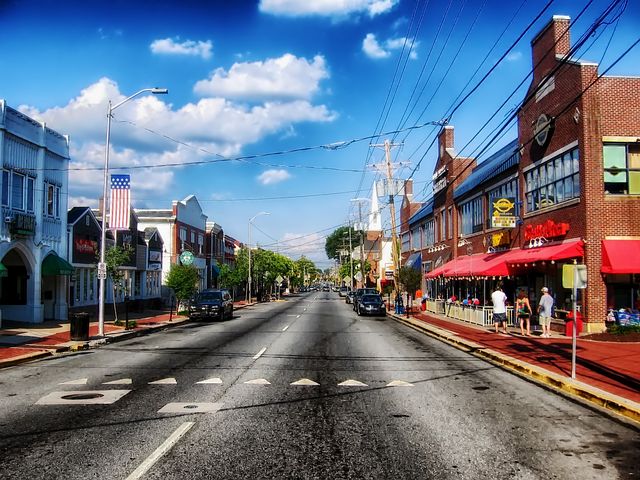Delaware
Delaware: A Glimpse into the First State’s Rich History and Cultural Landscape
Delaware, the second smallest yet sixth most densely populated U.S. state, is a gem nestled in the Mid-Atlantic region. It is renowned for its extensive history, diverse culture, and significant contributions to the development of the United States.
A Brief Overview
Delaware shares its borders with Maryland, Pennsylvania, and New Jersey. It owes its name to the adjacent Delaware Bay, which was named after Thomas West, 3rd Baron De La Warr, an English nobleman who served as Virginia’s first colonial governor.
The state’s geography is quite diverse, with Delaware occupying the northeastern part of the Delmarva Peninsula, and some islands and territory within the Delaware River. Despite its small size, Delaware’s population density is high, with Wilmington being its largest city and Dover serving as the state capital.

The Origins of Delaware
Delaware’s name harks back to Delaware Bay, which in turn was named after Thomas West, 3rd Baron De La Warr. The Delaware people, a native group to the Delaware Valley, also derived their name from the same source. The name “de La Warr” is of Anglo-French origin, linked to Sussex, and is believed to have been derived from a Norman “lieu-dit”, La Guerre.
The Early Inhabitants: Native Americans
Before Europeans set foot on Delaware’s soil in the 16th century, the state was home to several Native American groups. The Unami Lenape, or Delaware, lived mostly along the coast, while the Nanticoke tribe occupied much of the southern Delmarva Peninsula.

The Dutch and the Swedes: Early European Settlers
The Dutch were the first Europeans to settle in Delaware, establishing a trading post at Zwaanendael in 1631. However, all settlers were killed within a year due to a dispute with local Native American tribes. In 1638, New Sweden, a Swedish trading post, and colony, was established at Fort Christina, which is now part of Wilmington.
The Evolution of Colonial Delaware
The colony of Delaware underwent various transformations during the colonial era. It was initially ruled by the Dutch, who established a fort at present-day New Castle and later annexed the New Sweden colony. However, in 1664, the Dutch were defeated by a fleet of English ships.
The American Revolution: Delaware’s Role
Delaware played a significant role in the American Revolution. The state was one of the Thirteen Colonies that participated in the rebellion against British rule. On December 7, 1787, the colony became the first state to ratify the U.S. Constitution, earning it the moniker “The First State”.
Delaware during the Reconstruction Era and Industrialization
Following the Civil War, Delaware underwent significant changes both socially and economically. During the Reconstruction Era, the state passed laws mandating segregation and limited the voting rights of African Americans. However, by the late 19th century, Wilmington had become a significant manufacturing center, leading to a shift in the state’s economy and demographics.

Delaware Today: Preserving its Legacy
Despite its small size, Delaware’s rich history and cultural diversity make it an essential part of the United States. The state continues to celebrate its history, with important historical sites and annual festivals that attract visitors from around the country. Moreover, Delaware’s commitment to preserving its natural resources, coupled with its vibrant economy, ensures that it remains a beloved state for its residents and visitors alike.
From its Native American origins to its role in the American Revolution and its evolution into a modern, diverse state, Delaware’s rich history and culture make it a fascinating study. As the first state to join the Union, it holds a unique place in American history and continues to contribute to the country’s growth and development in significant ways.
